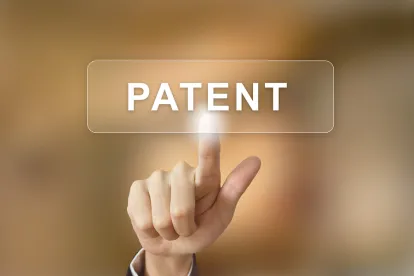The University of Strathclyde recently found relief at the Federal Circuit when a unanimous panel reversed the Patent Trial and Appeal Board’s (“the Board”) final determination that their method patent for photoinactivating MRSA bacteria was obvious. The Federal Circuit found that due to a lack of substantial evidence in the prior art, the patent was not shown to be obvious/unpatentable.
U.S. Patent No. 9,839,706 (“the ’706 patent”) claims a method for controlling methicillin-resistant Staphylococcus aureus, more commonly known as MRSA. MRSA is a gram-positive bacteria infamously known for its antibiotic resistant qualities and persistent presence in hospital environments. Previous methods for controlling MRSA bacteria required application of a photosensitizing agent, followed by activation of the photosensitizing agent using “light energy.” Light energy is visible light with a wavelength in the region of 450-850 nm. Recognizing that applying the photosensitizing agent requires knowledge of where the microscopic MRSA bacteria is growing, the University of Strathclyde developed a method of inactivation that does not require the photosensitizing agent.
The University of Strathclyde determined that a blue or white light wavelength between 400-420 nm can stimulate the MRSA bacterial inactivation process without a photosensitizing agent. Univ. of Strathclyde v. Clear-Vu Lighting LLC, No. 2020-2243, 2021 WL 5114660, at *3-4 (Fed. Cir. Nov. 4, 2021). These findings are reflected in claim 1 of the ’706 patent.
In 2019, the Board instituted Clear-Vu Lighting’s challenge to the ’706 patent. In July 2020, the Board issued its final determination, finding claims 1 through 4 of the ’706 patent to be obvious over three prior art references: the Ashkenazi paper, the Nitzan paper, and the Jones patent application. The University of Strathclyde promptly appealed, and the Federal Circuit reversed the Board’s findings, focusing its discussion on the Ashkenazi and Nitzan papers.
The Prior Art
The Ashkenazi paper discusses the “photoeradication of Propionibacterium acnes (P. acnes),” a different gram-positive bacterium that is the leading cause of acne. Id. at *5. The article proposed using a blue light to “photoinactivate the intact bacterial cells” and provided a method for inactivating P. acnes using an agar containing ALA, a photosensitizing agent, and exposure to blue light at 407-420 nm. Id. at *5-6.
The Nitzan paper expanded on the Ashkenazi method, discussing how different cultures might affect bacterial photoinactivation. The study looked both to cultures using the ALA photosensitizing agent, and cultures that did not use it. The results concluded that with cultures that did not use a photosensitizing agent, there was no inactivation of the cultures.
Clear-Vu argued, and the Board agreed, that a person of ordinary skill in the art would have a “reasonable expectation” of “inactivating MRSA” at the claimed wavelength without use of a photosensitizing agent, despite the fact that neither Ashkenazi nor Nitzan “achieved inactivation of any bacteria without a photosensitizer.” Id. at *8.
The Federal Circuit Decision
In a unanimous panel opinion authored by Judge Stoll, the Federal Circuit first looked to the Board’s determination that the Ashkenazi and Nitzan prior art references, when taken together, disclosed all the claim limitations. The Court noted that the key issue is whether the references “teach inactivating one of the claimed Gram-positive bacteria without using a photosensitizer.” Id. at *10.
The Court found that the claims of the ’706 patent require that both (1) a photosensitizer is not used, and (2) the MRSA bacteria are inactivated. The Court explained that the Ashkenazi paper undisputedly uses a photosensitizer, either riboflavin alone or riboflavin combined with ALA, and found “nothing in Ashkenazi that discloses or suggests inactivating P. acnes, or any other bacteria, without using a photosensitizer.” Id. at *10. While the Nitzan paper disclosed bacteria that was exposed to “blue light without ALA or any other photosensitizer,” there was “no evidence that Nitzan successfully achieved inactivation.” Id. at *11. Further, neither reference expressly taught nor indicated that photoinactivation without a photosensitizer would be effective. Therefore, the Federal Circuit concluded that a mere combination of the prior art references does not render the ’706 patent obvious.
Next, the Court looked to the Board’s determination that a person of ordinary skill in the art would have had a reasonable expectation of success by inactivating the MRSA bacteria with a blue light without using a photosensitizer. The Court expressly rejected that finding, noting it was rooted in “conjecture [and] coupled with hindsight reliance” on the ’706 patent. Id. at *13.
Specifically, the Board had concluded that the Ashkenazi reference taught that light-activated porphyrin molecules may cause inactivation for P. acnes. According to the Board, since MRSA has naturally occurring “porphyrin molecules,” a person of ordinary skill may reasonably expect inactivation of the MRSA bacteria to occur when exposed to blue light without the assistance of a photosensitizing agent. The Federal Circuit concluded, however, that there was “simply no evidence” of this in the record; in fact, the record led to the opposite conclusion of this finding. Id. at *13-14.
Further, the Court opined that the results described in the Nitzan paper are “directly contrary to the Board’s rationale.” Id. at *14. The Nitzan paper explicitly found that when no ALA (photosensitizing agent) was present, there was “no decrease in viability and thus no inactivation.” Id. at *14. The Court also discussed how this reference accounted for the potentially naturally occurring porphyrin molecules, yet still teaches contrary to the rationale of both the Board and Clear-Vu’s argument. The Court noted that “not only is there a complete lack of evidence” to support the Board’s reasonable expectation of success determination, but there is also evidence in direct contradiction, explicitly “showing that others had failed to inactivate MRSA . . . without using a photosensitizer.” Id. at *17.
The Federal Circuit reversed the Board’s final determination, finding the petitioner failed to establish that the ’706 patent claims were obvious over the Ashkenazi and Nitzan prior art references.
Takeaways
Although each case depends on its own facts, the Federal Circuit’s decision bodes well for Patent Owners in cases that involve turning prior art failures into a success. For method patents specifically, if each uniquely claimed “step” of the patent is not found or suggested in the combination of prior art references, the challenged patent claims may not be obvious.
Petitioners should be cautious in relying on inferential arguments in obviousness challenges. While the Court reiterated that a finding of obviousness is rooted in a “reasonable expectation” of success, and not “absolute predictability” or “guaranteed success,” the Court noted that even a reasonable expectation of success argument can fail when the prior art explicitly teaches the failure of a method that the Patent Owner successfully overcame. Indeed, the notion of improving upon previously disclosed art is the very purpose underlying the patent system.
The case is University of Strathclyde v. Clear-Vu Lighting LLC, No. 2020-2243 (Fed. Cir. Nov. 4, 2021)




 />i
/>i

